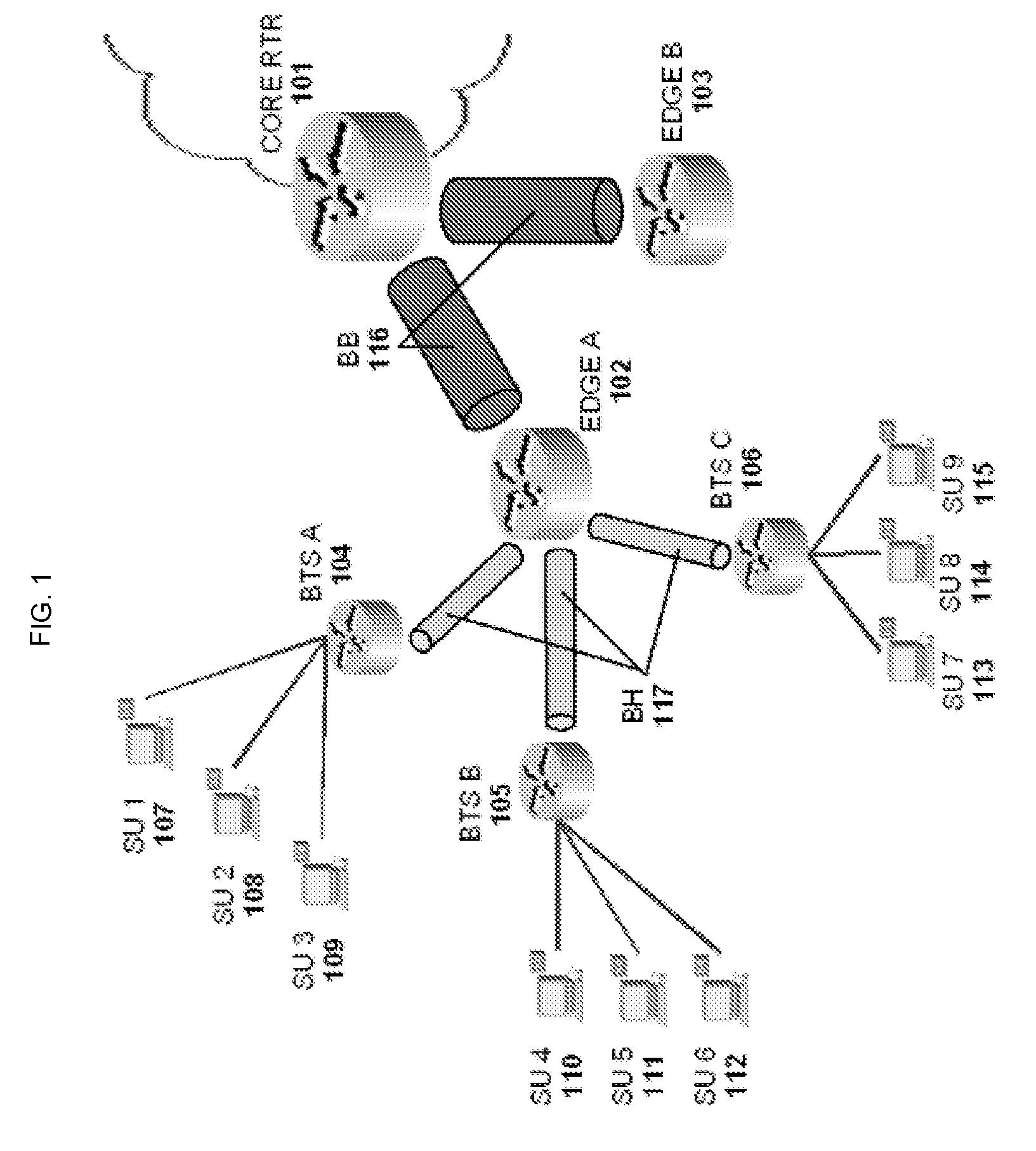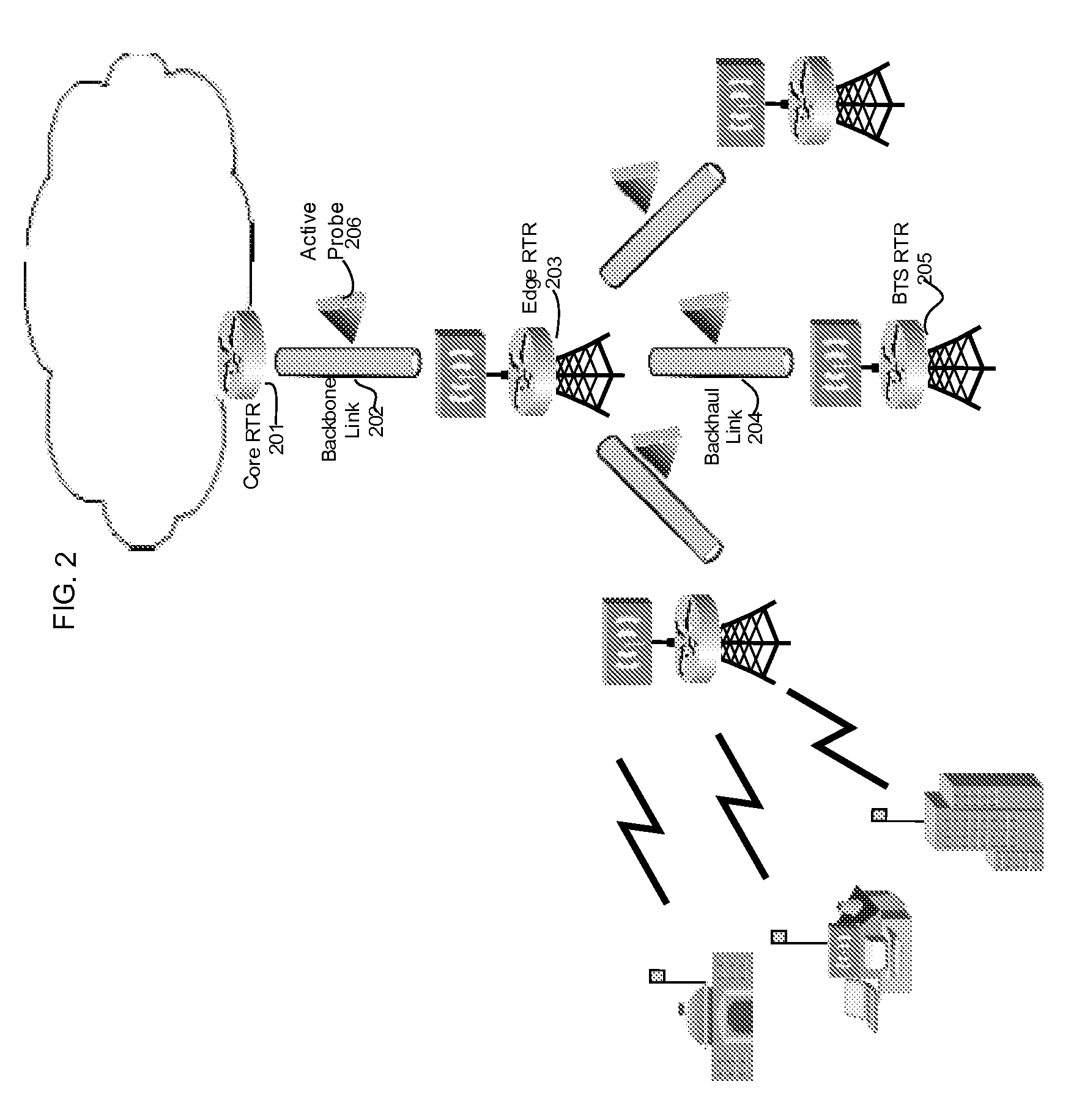Methods And Systems For Dynamic Bandwidth Management For Quality Of Service In IP Core And Access Networks
a bandwidth management and access network technology, applied in data switching networks, frequency-division multiplexes, instruments, etc., can solve the problems of data loss or drop of request/s, capacity mismatch, bandwidth utilization induces a quick depletion of network resources, etc., to achieve stringent quality of service control, efficient resource use, and reasonable implementation cost
- Summary
- Abstract
- Description
- Claims
- Application Information
AI Technical Summary
Benefits of technology
Problems solved by technology
Method used
Image
Examples
Embodiment Construction
[0023]As illustrated in FIG. 1, a typical model of a distributed hierarchical packet-based network is made of several user networks under respective base stations whose backhaul links 117 terminate at contention nodes of an edge router 102 to pass packet streams that carry information through a limited and shared backbone link 116 in order to access a particular bandwidth-requiring resource at the Internet network. These nodes located at every base station, edge and core aggregation points route IP traffic such as voice, data, video, etc. to and from adjacent transport links. Since the IP network needs to sustain a state without congestion as a necessary and sufficient means to guarantee QoS, all traffic traversing through these transport links must be monitored and checked by a distribution of Active Probes 206, which may possibly be situated across several links as shown in FIG. 2 whose nodes may be triggered as chokepoints during heavy Internet traffic peaks or contentions. The A...
PUM
 Login to View More
Login to View More Abstract
Description
Claims
Application Information
 Login to View More
Login to View More - R&D
- Intellectual Property
- Life Sciences
- Materials
- Tech Scout
- Unparalleled Data Quality
- Higher Quality Content
- 60% Fewer Hallucinations
Browse by: Latest US Patents, China's latest patents, Technical Efficacy Thesaurus, Application Domain, Technology Topic, Popular Technical Reports.
© 2025 PatSnap. All rights reserved.Legal|Privacy policy|Modern Slavery Act Transparency Statement|Sitemap|About US| Contact US: help@patsnap.com



